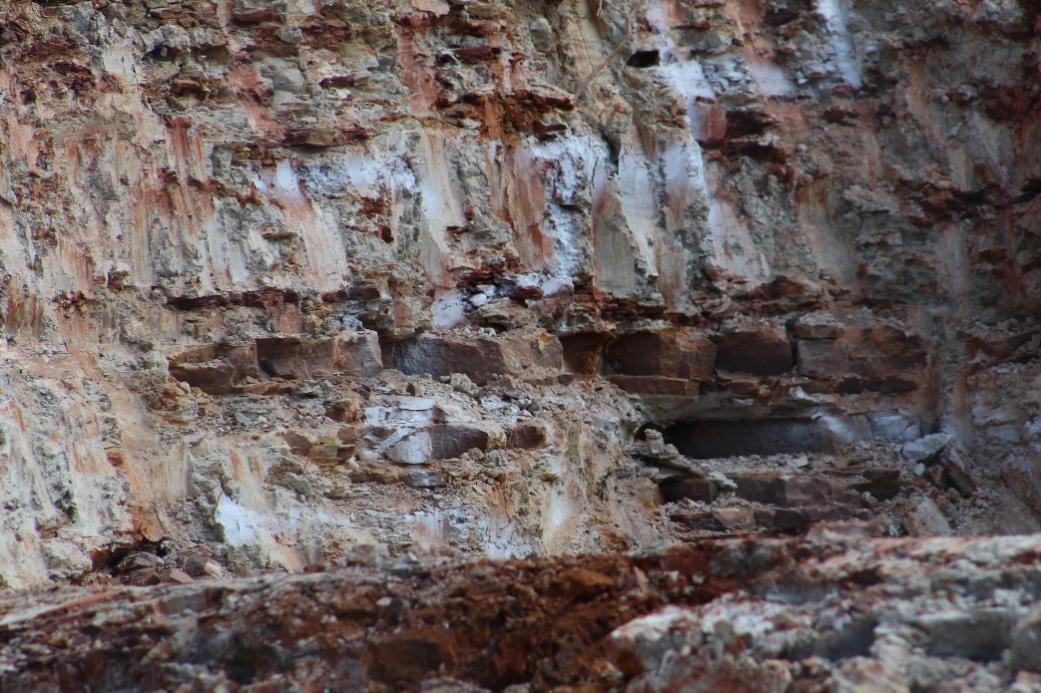October 29 - November 4, 2017: Issue 335
Bad News Story Turns Into GREAT News Story: Sacred Ochre At South Avalon Beach To Be Retained Through Positive Response
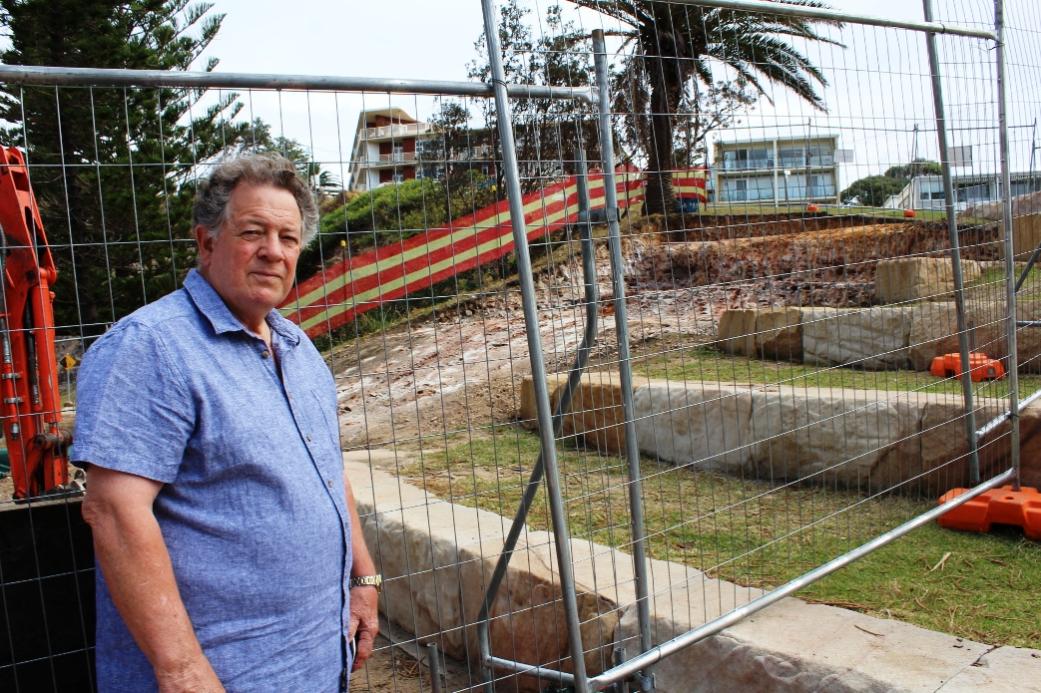
Neil Evers, Aboriginal Support Group Manly Warringah Pittwater at South Avalon Beach on Wednesday October 25th, 2017
The immediate response of Councillors and staff of the Northern Beaches Council this week to residents concerns over the disturbing of Sacred Ochre at South Avalon as part of the installation of the coastal walkways and cycleways stretching from Manly to Palm Beach meant what was tears on Wednesday was a cry of joy by early Thursday morning.
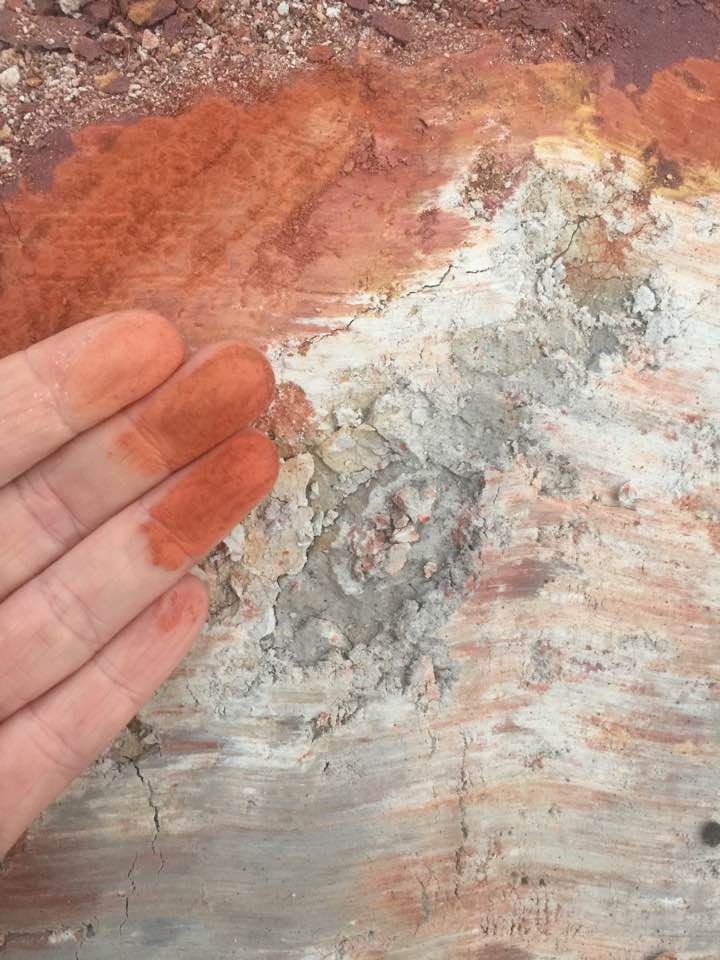 The incident is a great example of how community engagement can excel and a great reminder of how your input to the current consultation (see below) will ensure best practice creates best outcome.
The incident is a great example of how community engagement can excel and a great reminder of how your input to the current consultation (see below) will ensure best practice creates best outcome.
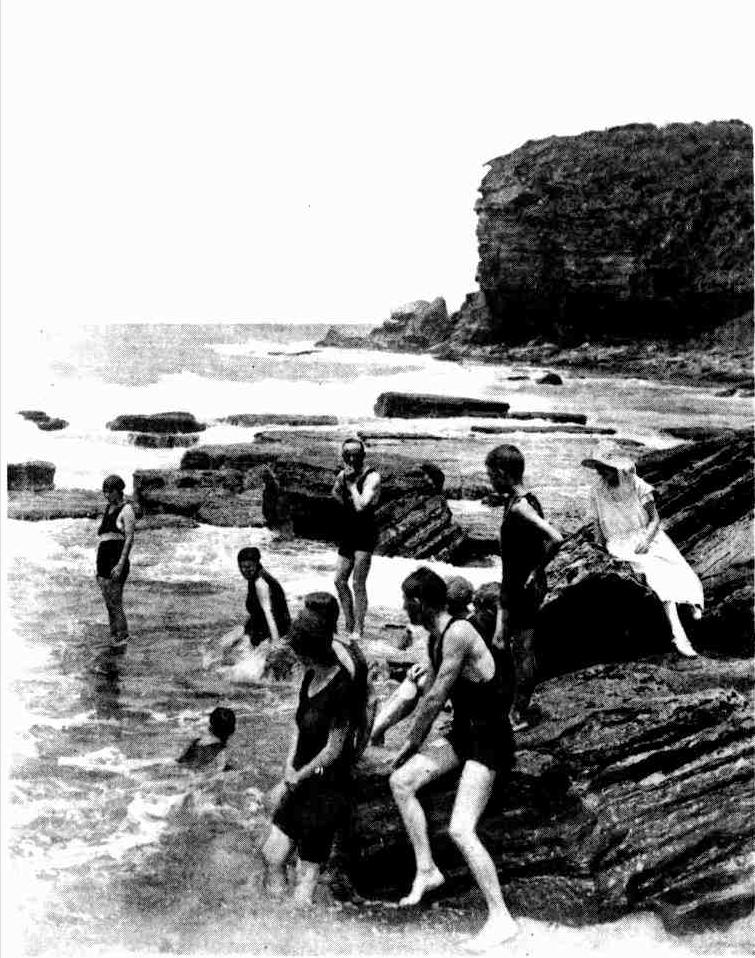
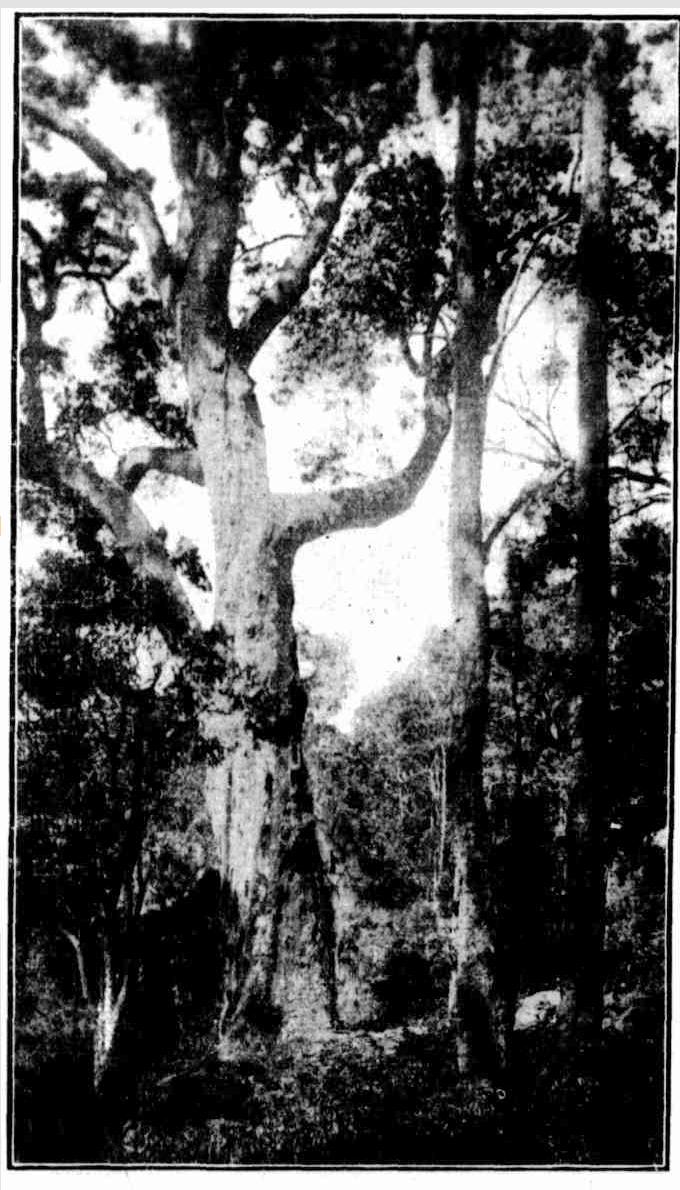
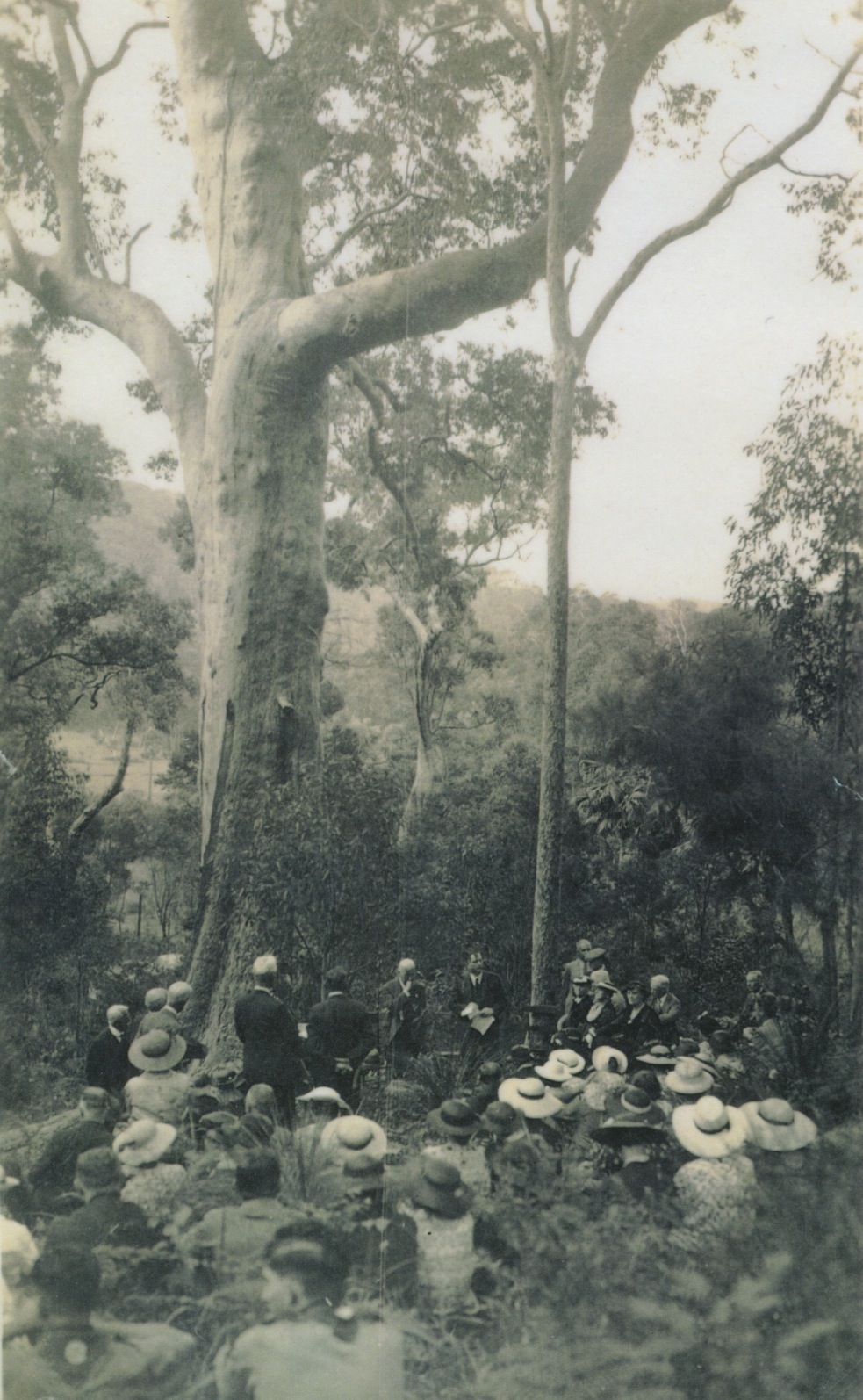
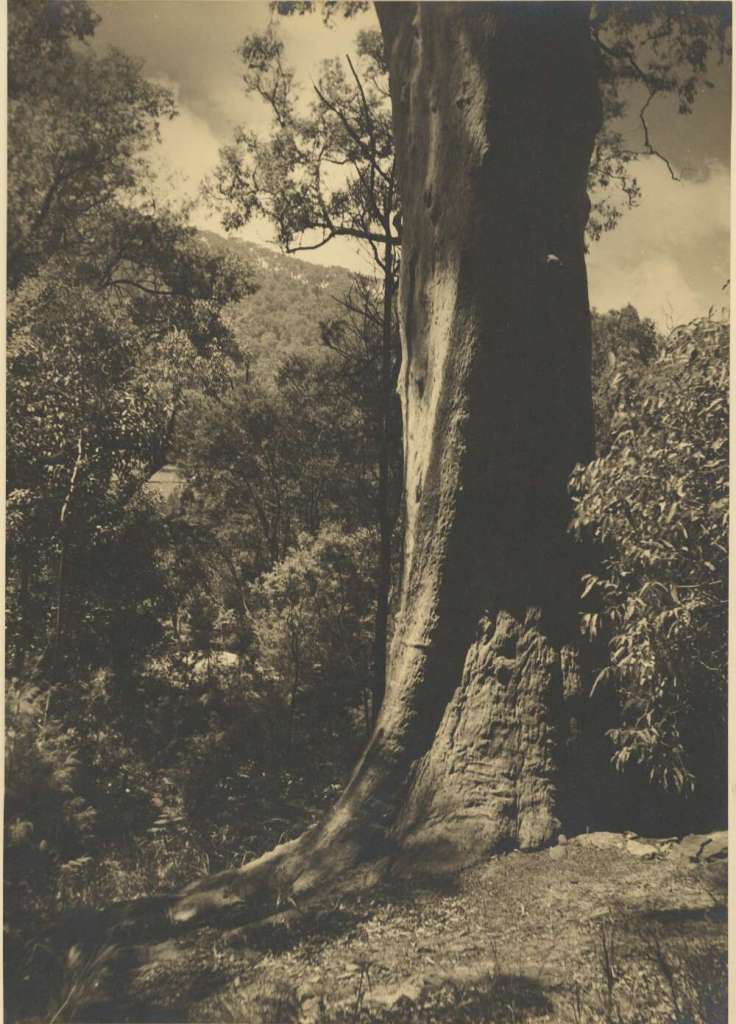

Earlier on Wednesday residents contacted Pittwater Online, distressed that this clay, used for painting and ceremony where the ochre that is ground up and mixed with water is not available, was being disturbed and soon to be covered over. Pittwater Online asked Neil Evers (ASGMWP) to come and look at the disturbed ground and he then contacted those overseeing such heritage in the Manly office and the NSW Office of Environment and Heritage.
Councillor Sue Heins was also immediately onto the situation when made aware of what was going on. Work stopped from that minute on while the situation was assessed.
On Thursday Neil contacted us to relay the information that the ground was being looked at by OE&H and a decision had been made by Council to reconfigure the path to go around this site.
 The incident is a great example of how community engagement can excel and a great reminder of how your input to the current consultation (see below) will ensure best practice creates best outcome.
The incident is a great example of how community engagement can excel and a great reminder of how your input to the current consultation (see below) will ensure best practice creates best outcome. The matter also serves as a timely reminder that if any Aboriginal Engravings or Relics are unearthed during any building works or road or path construction all work is to cease immediately and the Aboriginal Heritage Office (AHO) and Office of Environment and Heritage (OEH) are to be notified.
As there are many with memories of shells alike the midden found in Angophora Reserve or those recorded at Clareville once being part of this South Avalon beach landscape, this nook of the beach may have been used as a ceremonial site alike that which was where Pittwater Park at Palm Beach now is - making it a sacred or ceremonial site.
As the lady who contacted us explained:
"The Ochre - as a clay - i's the traditional material for ceremonial use. It's the 'paint'. And so much more. Each colour has a message and all is putting the Earth upon you as part of ceremony.
Even the young ones painting up in 'fun' adds joy back into the grid we live within. There is still some so I will return and share the story more widely so the knowledge is what saves it."
Aboriginal sites in NSW range from large shell middens on the coast, to small surface scatters of stone artefacts on the inland semi-arid plains.
They can include: natural sacred sites, occupation sites, rock art, cemeteries, story sites, such as North Brother Mountain in Dooragan National Park, massacre sites, missions.
Ceremonial grounds are sites where initiation ceremonies, marriage alliance ceremonies, tribal meetings, and other important social functions were held. They are places of great significance to Aboriginal people.
The primary piece of legislation which protects Aboriginal cultural heritage in NSW is the National Parks and Wildlife Act 1974 (NPW Act).
Under the NPW Act it is an offence to harm (destroy, deface, or damage) or desecrate an Aboriginal object or Aboriginal place, or in relation to an object, move the object from the land on which is has been situated.
The NPW Act is complemented by the National Parks and Wildlife Regulation 2009 which:
- provides for the management of Aboriginal land and objects
- makes administrative arrangements for Boards and Advisory Committees.
OEH manages and protects Aboriginal heritage in a number of ways. These include:
- listing Aboriginal objects and Aboriginal places on the Aboriginal Heritage Information Management System (AHIMS) and on the site database, which is available to the public
- working with the community to have Aboriginal Places declared
- repatriating Aboriginal ancestral remains
- entering into conservation agreements with private and public landholders
- providing secretariat services to the Aboriginal Cultural Heritage Advisory Committee
- issuing Aboriginal Heritage Impact Permits (AHIPs), and managing the public register of AHIPs
- issuing stop-work orders, interim protection orders and remediation directions
- issuing care and control agreements for Aboriginal objects salvaged under an AHIP.*
THE ROCKY COAST OF AVALON.

Avalon is near Palm Beach, that exquisitely beautiful spot beyond Newport, which in recent years has become a fashionable holiday and week-end resort. These young people an enjoying' themselves at what is known as the Avalon bathing hole, a natural rocky bath, which has been improved by the residents in the locality. Current (1923, January 17). Sydney Mail (NSW : 1912 - 1938), p. 7. Retrieved from http://nla.gov.au/nla.news-article159024708
The week's good work achieved caused an investigation into what may still be in Avalon Beach - if we had eyes and knowledge to recognise such... Avalon Headland and Bangalley have a number of Aboriginal heritage sites. As of 2014 there were 116 known Aboriginal Heritage sites listed in Pittwater.
One of the most well known echoes NBC's determination to conserve and points to one incident towards conservation soon after Avalon Beach was opened to development by A J Small that led, fortuitously, to the conservation and protection of one of these sites - that which is in Angophora Reserve.
The following snippets share a tree, an architect, a builder's and a devleloper's name:
ANCIENT RED GUM.
Centre of New Reserve.
BUSH NEAR AVALON.
'Set aside by' the Wild Life Preservation Society of Australia, primarily for the preservation of a giant example of the Sydney red-gum (Angophora lanceolata), the Angophora Reserve, at Avalon, was officially opened on Saturday afternoon by Sir Philip Street.
The president of the society (Mr. W. G. Kett) said the reserve was a memorial to the line work in the cause of science done by their secretary, Mr. D. G. Stead.
Sir Philip Street said that the society, in preserving this great tree as a natural monument and setting apart the area with its interesting fauna and flora, was rendering a public service.
The magnificent angophora, on which many axemen must have cast covetous eyes, was. he had been told, about 1,000 years old.
Mr. Kett said that, in the reserve, which contained about six and a half acres, there were many varieties of Australian trees and shrubs, and it was also the rendezvous of some of the most beautiful Australian birds.
Other speakers were the president of Warringah Shire, Councillor Green, Messrs. R. T. Baker, and D. G. Stead.
The reserve is a fine example of Australian bush land, rising from a small valley to the top of a hill overlooking the coast and Broken Bay. About 150 persons attended Saturday's function.
After the function, the visitors were entertained at afternoon tea by the society at the Avalon Golf House.
ANCIENT RED GUM. (1938, March 21).The Sydney Morning Herald (NSW : 1842 - 1954), , p. 9. Retrieved from http://nla.gov.au/nla.news-article17450337
Beautiful, isn't it?
A magnificent redgum, probably 1000 years old, has been "dedicated" in the six-acre Angophora Reserve at Avalon. We wonder who will sit in the shade of this big tree after another 1000 years? What color will he be, and in what language will they whisper? One thing, will, endure. The tree is close to the Avalon Golf Links; and whether Redgum lives to be 2000 or 3000 years old; the world will still talk golf. A WINDOW ON THE WORLD (1938, March 22). The Sun (Sydney, NSW : 1910 - 1954), p. 4 (LATE FINAL EXTRA). Retrieved from http://nla.gov.au/nla.news-article229877986
THE "ANGOPHORA" RESERVE
Preserving Australia's Fauna

The Angophora Reserve, which is the Wild Life Preservation Society's new Bushland Sanctuary at Avalon, N.S.W., was officially opened and dedicated by the Hon. Sir Phillip Street, K.C.M.G., on Saturday last, March 19th. This reserve had been set aside primarily for the preservation of a giant 'example of the Sydney Red Gum (Angophora lanceolata) as a national monument. Owing to the junction of two great geological forms (Hawkesbury sandstone and Narrabeen shales) at this spot, the trees and shrubs present many features of interest to the botanist, field naturalist and bush lover.
THE “ANGOPHORA” RESERVE (1938, March 23). Construction and Real Estate Journal (Sydney, NSW : 1930 - 1938), p. 7. Retrieved from http://nla.gov.au/nla.news-article222925110

This photo shows the official opening of the Angophora Reserve on 19 March 1938 by Sir Phillip Street (KCMG). Much of the groundwork to enable the purchase of the land by the Wildlife Preservation Society in January 1937 was done by Thistle Harris. The reserve cost the Society 364 pounds 19 shillings and 7 pence (which converts to around 730 dollars!). The volunteer bush care group meet on the 3rd Sunday of each month usually at the Palmgrove Road entrance. – Geoff Searl, President of the Avalon Beach Historical Society - photo courtesy ABHS
The Birds Laughed!
A PARTY of our C.P. girls accompanied Cinderella to Avalon on March 19 to attend the official opening of the Angophora Reserve, a forest sanctuary purchased by the Wild Life Preservation Society and dedicated to the conservation of Sydney's largest redgum (Angophora Ianceolata), a giant possibly 1000 years old, but still in his prime. As the different speakers addressed the guests scattered over the grass, on the importance of preserving our beautiful bush and teaching the young generation to reverence such splendid national treasures as our forests contain, loud applause came from an unexpected quarter. A group of kookaburras had accepted the invitation for all forest-lovers to celebrate the day, and shouted their glee from the branches overhead. It was the mast eloquent of all the tributes paid that day to the value of tree-conservation. Who says that birds can't understand?
The Birds Laughed! (1938, March 30). Sydney Mail (NSW : 1912 - 1938), p. 63. Retrieved from http://nla.gov.au/nla.news-article166229598

Searle, E. W. Red gum, angophora lanceolata, Avalon, New South Wales, circa. 1935 Retrieved from http://nla.gov.au/nla.obj-142184682
THE OPENING CEREMONY, ANGOPHORA PARK, AVALON, 19th MARCH, 1938

The ceremony took place beneath the giant Angophora (Red Gum) which is estimated to be 1,000 years old. In this native bushland, only one hour's run from the city, flora and fauna will find sanctuary for all time, thanks to the enterprise of Mr. David G. Stead, the Wild Life Preservation Society and Mr. A. J. Small who released the land at a tithe of its value.
THE OPENING CEREMONY, ANGOPHORA PARK, AVALON, 19th MARCH, 1938 (1938, April 6). Construction and Real Estate Journal (Sydney, NSW : 1930 - 1938), p. 8. Retrieved from http://nla.gov.au/nla.news-article222925313
AVALON
Another Contribution by A. J. Small
When the history of Avalon is written, one man's name in particular will be outstanding. It is that of Mr. A. J. Small. Not only has he given headlands and parklands to the people to preserve for them vantage points from which ocean views can be seen for all time, but he is still giving. His last act of graciousness was when he gave an area of seven acres of land at half value in order that the Wild Life Preservation Society could acquire its Angophora Park. Mr. Small also erected the fence and iron gates, made the approach, built the steps, and cleared the paths so that the giant Angophora (sometimes called Red Gum) which is said to be 1,000 years old and of immense girth, may be viewed in its natural surroundings. At the time of the opening (by Sir Phillip Street on March 19th) there was an improvised orchestra of birds — butcher birds, soldier birds, warblers, and jackasses, in fact a representative from practically all the feathered families — which came down to look curiously on the people who attended the opening and to contribute, to the scene. Afterwards, 100 invited guests accepted Mr. Small's hospitality to afternoon tea at the New Golf House at Avalon. The fine golf course there has not a club. All visitors can play there on an equal footing, and in this respect it occupies a unique position among the metropolitan golf courses. The new building, illustrated herewith, is of white sandstone with buttressed corners. The internal walls are of brick. In the lower storey are locker and retiring rooms for golfers with hot and cold showers for both sexes. The upper walls are shingled and the roof is covered with semi' glazed brown tiles. It is mainly occupied by a large combined lounge and dining room about 60 feet in length. The flooring is of tallowwood designed for dancing. For log fires in winter, an open fireplace, framed in 9in. x 2in. briquettes, has been provided, with a hearth of 9 feet wide. Manchurian Ash of exceptional figure lines the lounge artistically furnished in autumn tints. The architect for the golf building was E. Lindsay Thompson, and F. C. Fripp, the builder. AVALON (1938, April 6). Construction and Real Estate Journal (Sydney, NSW : 1930 - 1938), , p. 8. Retrieved fromhttp://nla.gov.au/nla.news-article222925312
* Retrieved fro the OEH webpage here
Connecting The Northern Beaches: Comment On Online Map
Thanks to an interactive mapping tool, the community can now see the works being delivered to connect the Northern Beaches, including 36km of coastal walkways and cycleways stretching from Manly to Palm Beach. Northern Beaches Council Mayor Michael Regan said the map is a one-stop shop for information on how Council is delivering the $22.3 million Connected Communities program.
“As we progressively connect the Northern Beaches through walkways and cycleways linked to B-Line transport hubs and services, this map helps the community connect in an online space.
“We want to give residents a clear overview of planned works as well as the opportunity to make comment,” Mr Regan said.
The Social PinPoint map provides the community with an opportunity to view the overall program in one location and can be zoomed in to identify individual projects.
Clicking on map pinpoints brings up details about that project and shows whether work is current or proposed. It also gives users the opportunity to learn more or have their say.
The map will be regularly updated as works progress on the program, which forms part of Council’s $32.6 million Connecting Northern Beaches infrastructure investment partnership with the NSW Government.
